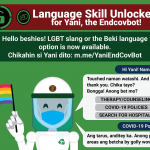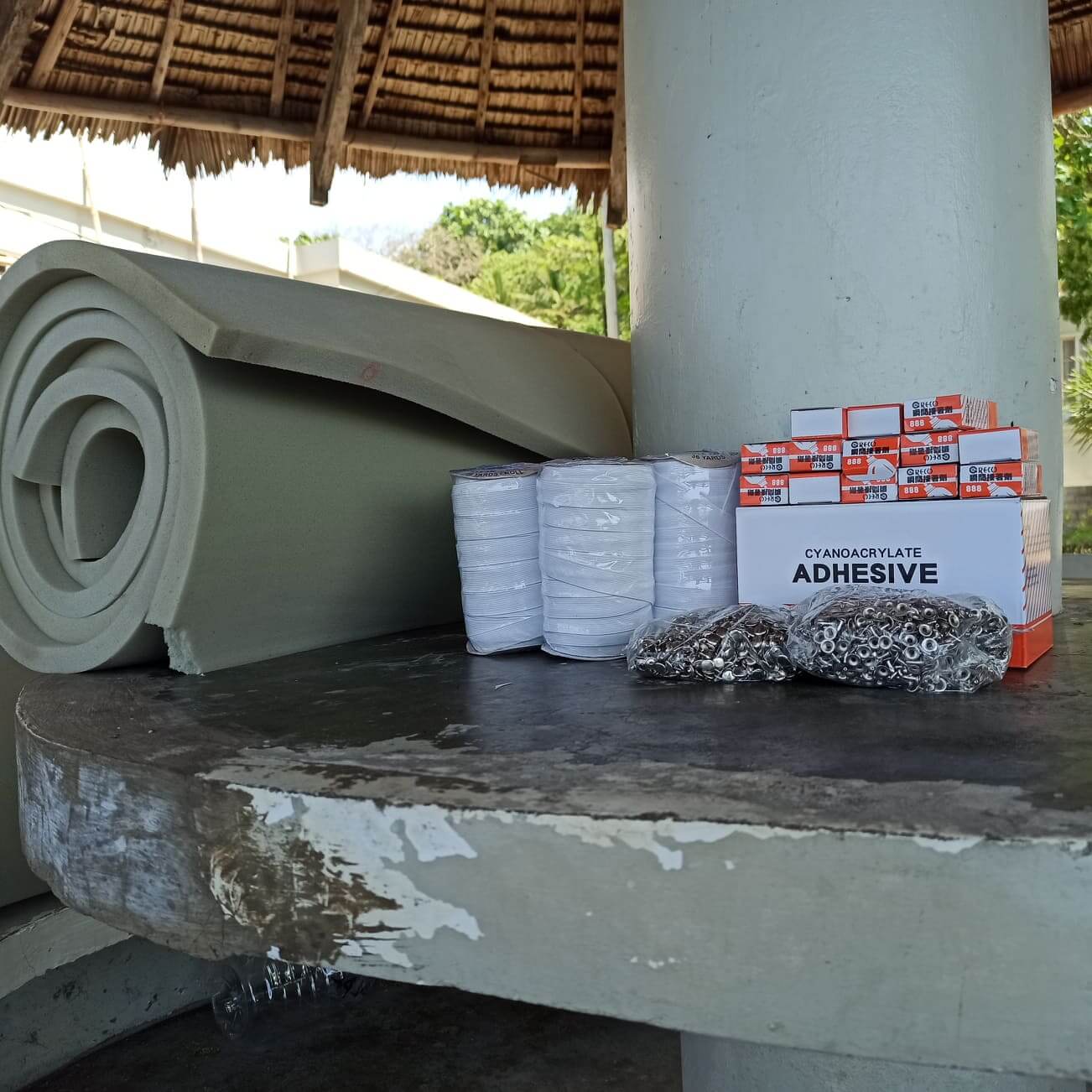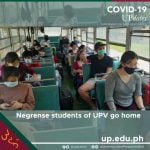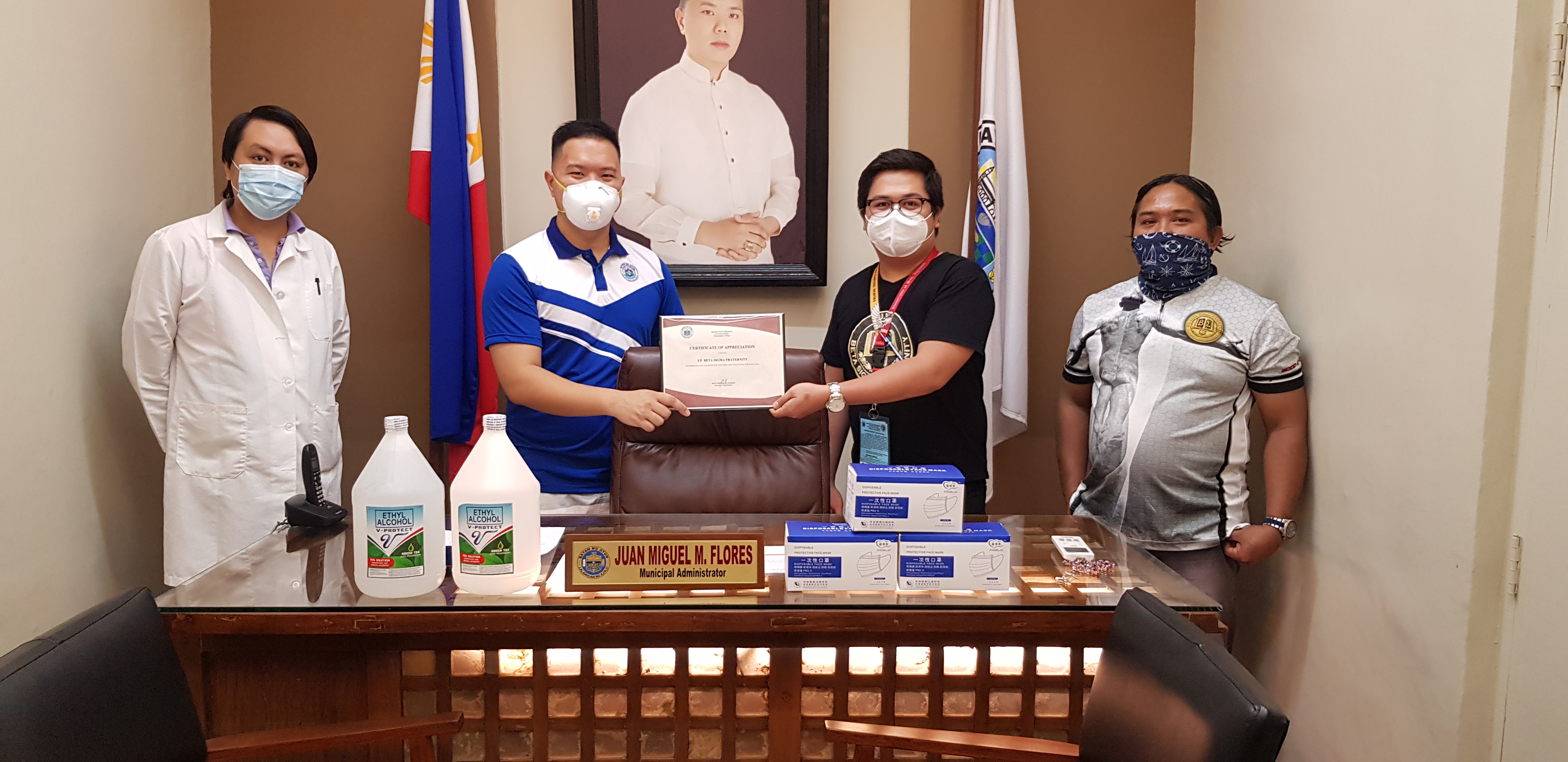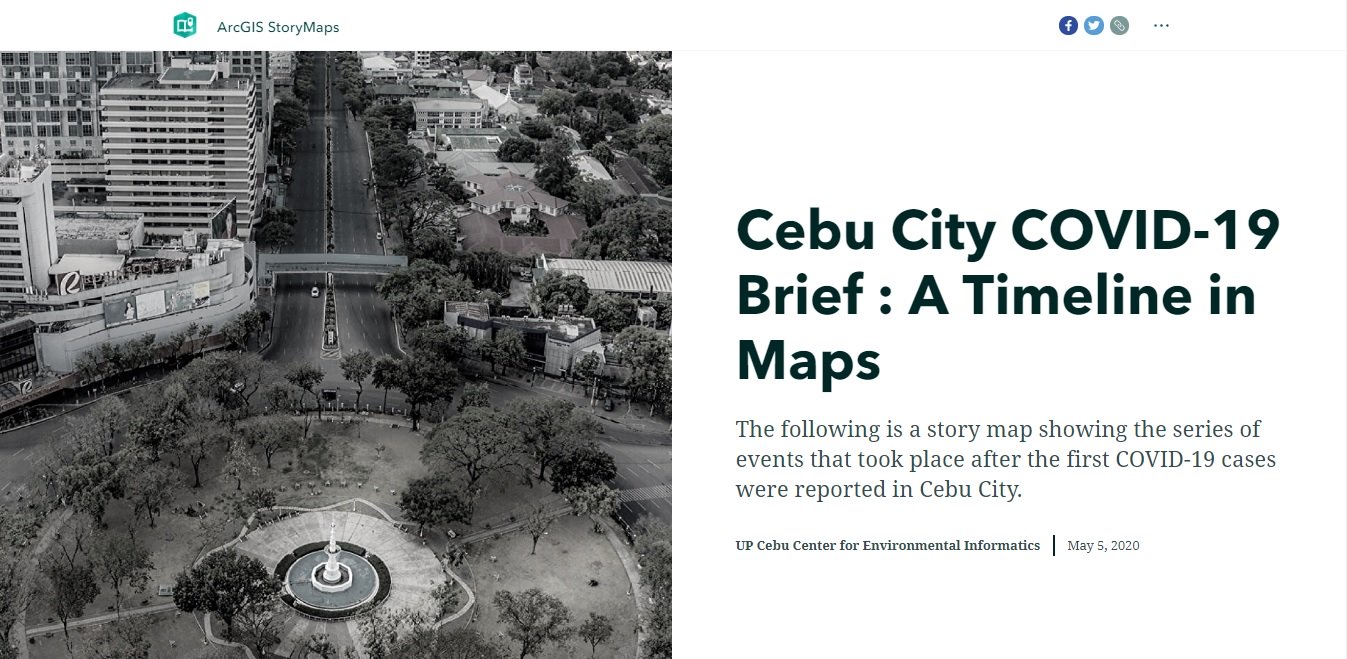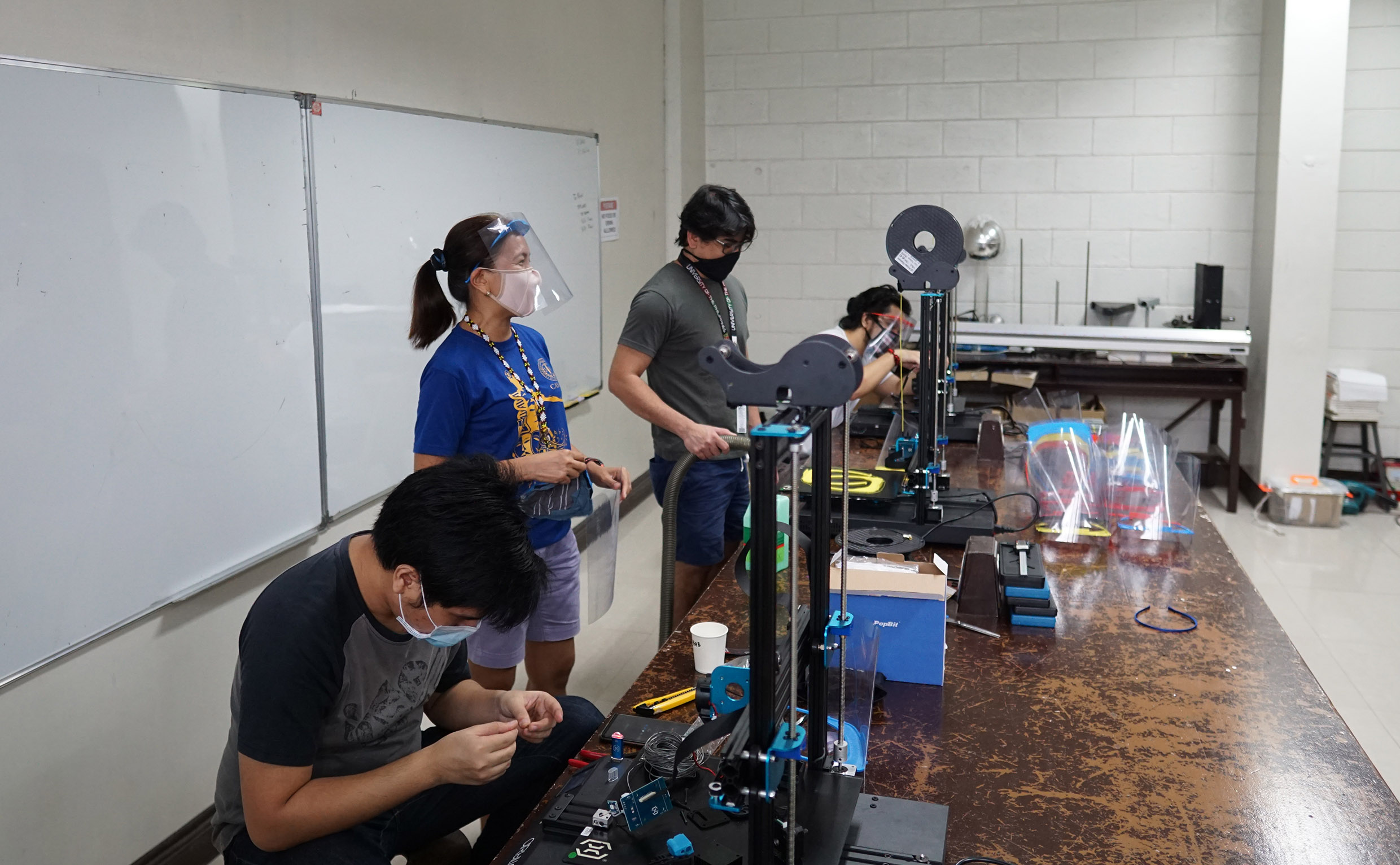LGBT slang or the Beki language option is now available when you converse with Yani! If you’re looking for COVID-19 statistics, the nearest hospitals, links to therapy and counseling, or information on policies, you can talk to Yani through Facebook messenger: m.me/YaniEndCovBot
Yani, the UP COVID-19 Pandemic Response Team’s chatbot designed to talk to humans and answer questions related to COVID-19, is also in the process of “learning” different Philippine languages to be able to reach and converse with more Filipinos in an open and engaging way.

